Photography in Special Relativity
This is an edited version of a talk I gave in my department in 2002. The primary point of this page is to present a gallery of computer images showing the effects of Special Relativity when taking photographs of objects moving at speeds close to the speed of light.
I make no real attempt to discuss the detailed physics as I just want to showcase the results. I've included some web-references at the end of this page that might be useful for the keen beans anxious to find out why it is so.
Photography
This is simply the process of capturing a family of photons on a photo-sensitive medium, such as a film.Every photograph records a set of photons at a single instant in the camera frame.
The photons that participate in a photograph arrive at the camera at the same time but this does not mean that they left the object at the same time. Why? Because the photons, which all travel at the same speed, will, for large extended objects, have to travel different distances from the object to the camera. This is a key point and will be the basis for our understanding as to how the motion of an object can effect its appearance in a photograph.
But first, a wee puzzle.
A puzzle
Here are two photographs, each taken with identical cameras and each at the same distance from the object. The only difference is one of the cameras was moving towards the object at 75% the speed of light.


Which photograph was taken by the moving camera? Collect
one chocolate frog if you chose the left image. For the moment, just accept
that it is so. Later we will see why.
Static objects
Here is a highly simplified example of how a photograph is made. In this movie two photons are shown as they make their way from the starship to the camera. The photons have been artificially slowed down so that we can see the exact process.
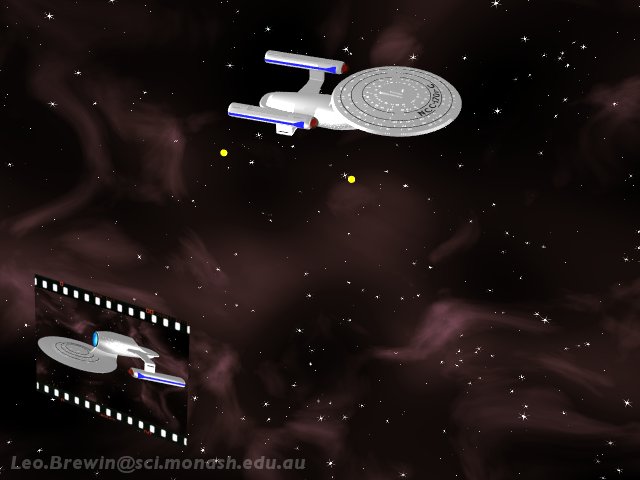
Notice that the photon from the front of the ship left well before the photon from the rear of the ship. However, both photons meet at the same time at the focal point of the camera's lens.
The general observation is that the more distant a
spot on the object is from the camera the earlier that spot must send out
its photon to be part of the photograph.
Moving objects
This is the same example as before but with the one variation that the ship now moves significantly during the time delay between the two photons. The image formed will now be distorted.
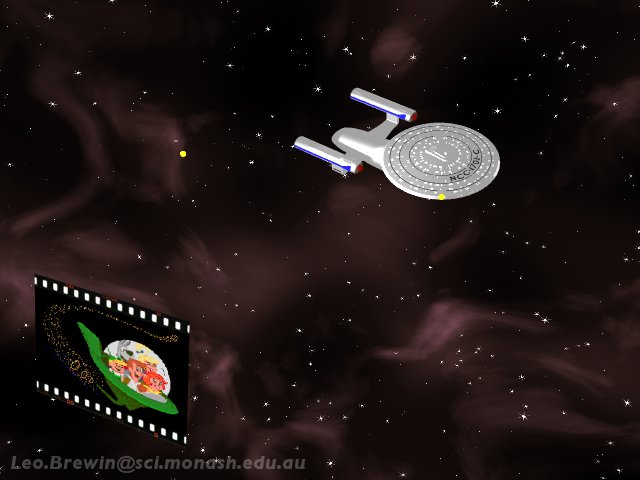
In this example the photon from the rear of the ship begins its journey before the photon from the front (in exact contrast to the previous example). Each photon will thus land on a different pixel on the film (compared with the same photon from the previous example). Consequently, we should not be surprised to see a very distorted photograph (though perhaps not as drastic as indicated in the above image, from Startrek to The Jetsons in one click of a camera!).
The logic in choosing the left image as the answer
to the puzzle should now be clear. Consider two identical cameras, one
at rest relative to the nebula and one moving towards it at 75% the speed
of light. When the two cameras cross they take their photographs. All of
the photons move at a finite speed. Thus the photons received by the moving
camera must have begun their journey some time earlier (than time of the
photograph). But then the moving camera would have been further away and
thus the image of the nebula must appear smaller. In general, the faster
you approach an object, the more concentrated its image will appear towards
the line joining you to the object.
Observation vs Photography
In Special Relativity there is a very specific meaning to the word observer. An observer is one of an infinite collection, in space and time, of robots whose sole task in life is to record the time and location of each detected event. When we say that an observation was made we simply mean that the space and time coordinates of an event have been recorded.A photograph is a record of all of the photons that were received at the focal point of the camera at the time the photograph was taken.
These are fundamentally different processes and they
give us very different information about the universe.
Effects of Special Relativity
There are three main effects, in regard to taking photographs, which can be attributed to Special RelativityAberration
We have seen this before. During the flight of the photon the object may have moved. At the instant the photograph is taken there will be two directions, one pointing to where the photon began its journey, the other pointing to where that original spot on the object has now moved to. A very similar effect occurs when you see and hear a high altitude jet aircraft. The direction from which the sound is heard is not the same as the direction in which you see the aircraft.Doppler shift
This is a direct consequence of the time dilation effects of Special Relativity. The object will carry its own clock, so too will the camera. These clocks will not tick at the same rate when they are in relative motion. This will lead to a change in colour of the received light. Objects (or parts thereof) will appear bluer than they should when coming towards us, redder when moving away.Intensity shift
This is also known as the headlight effect and it is a consequence of aberration. A set of stars, when we are moving towards them, will appear more densely packed (by measuring the number of stars per unit area on the night sky) than when we are at rest relative to the stars. Thus the energy we receive per unit area will increase and thus the image will appear to be brighter than the image we would have got had we been at rest relative to the stars.Raytracing
This is a computer technique for simulating the photographic process.
It works by reversing, in time, the normal photographic
process. It collects the photons that fell on the film and sends them all
back in time to where they began their journeys. When they reach their
origins the corresponding pixel on the film is coloured according to the
colour and physical properties of the object. This is a very useful technique
and it can be used to generate some very detailed images with excellent
attention to detail (shadows, textures, reflections etc.).
Relativistic Raytracing
The normal raytracing packages know nothing about Special Relativity. They all assume the speed of light to be infinite (or equivalently, that the motion of objects does not effect the photograph).To add the effects of Special Relativity the following rules were imposed.
- The only object allowed to move is the camera.
- The photons are created in the cameraÕs rest frame.
- Lorentz transformations were used to transform from the camera to the object rest frame.
- Standard raytracing methods are applied in the objects rest frame.
Demonstrations
Here are some simple demonstrations. These demonstrations do not take account of the Doppler shift nor of the headlight effect.The first image in each pair is the standard non-relativistic photograph. The second image is the photograph taken from a camera moving at 95% the speed of light relative to the object. Each image is also a link to WindowsMedia movie.
Dr Who's Tardis
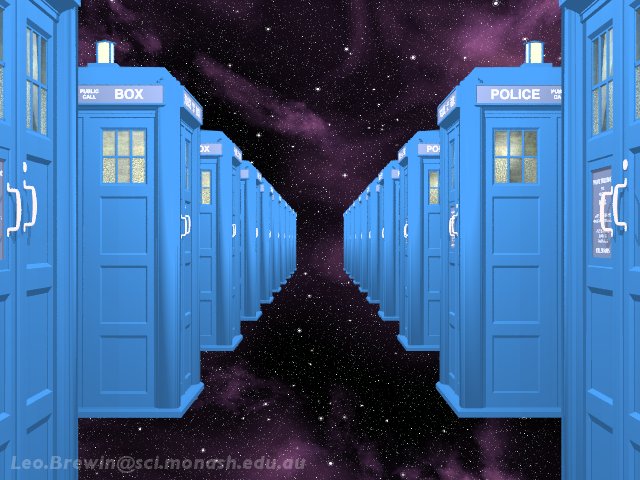
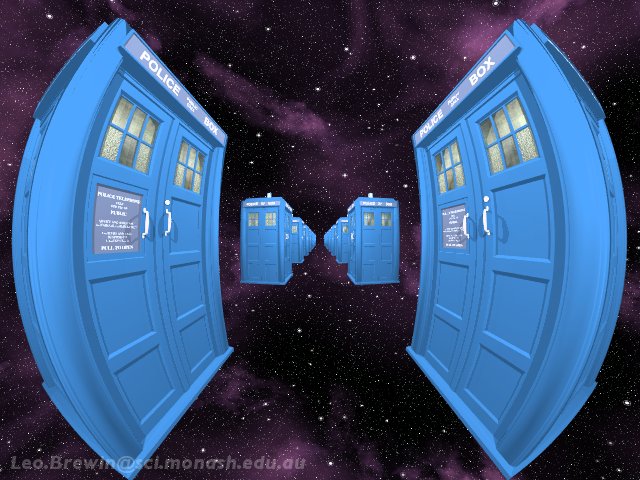
Rubik's cube
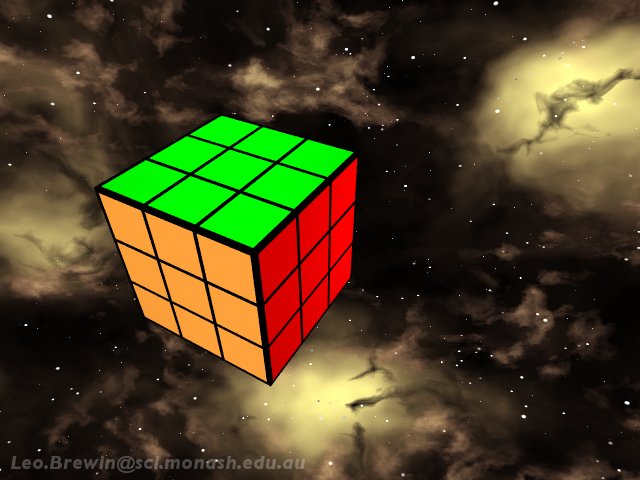
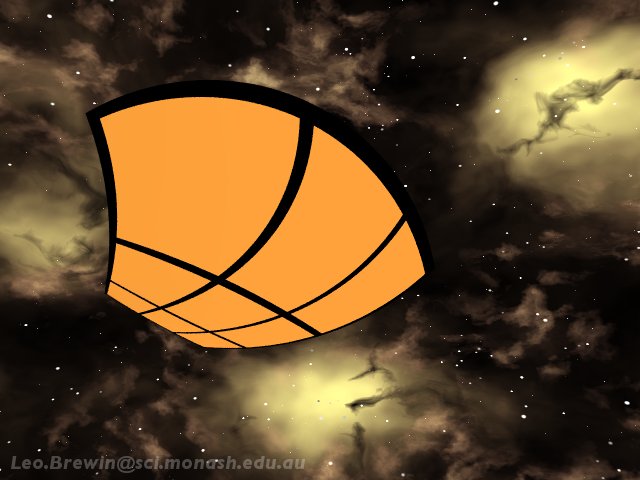
The Albert Einstein Steam Railway
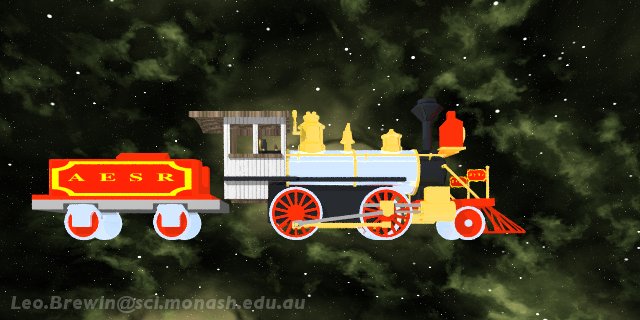
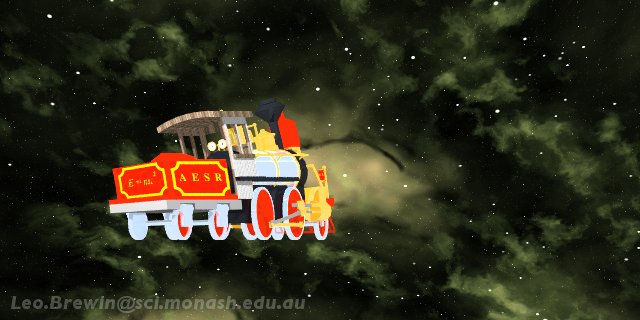
Earth
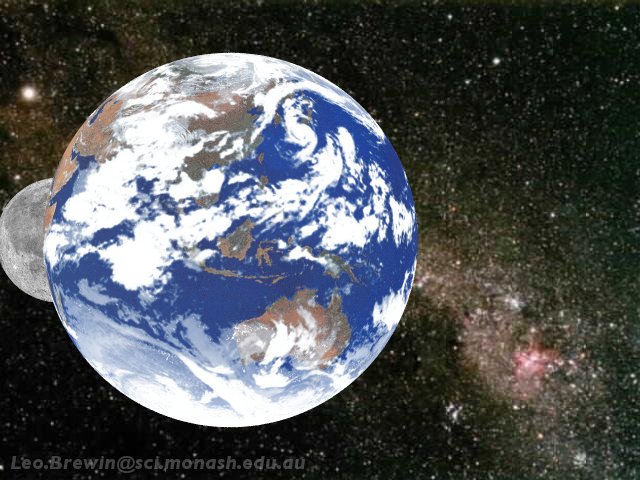
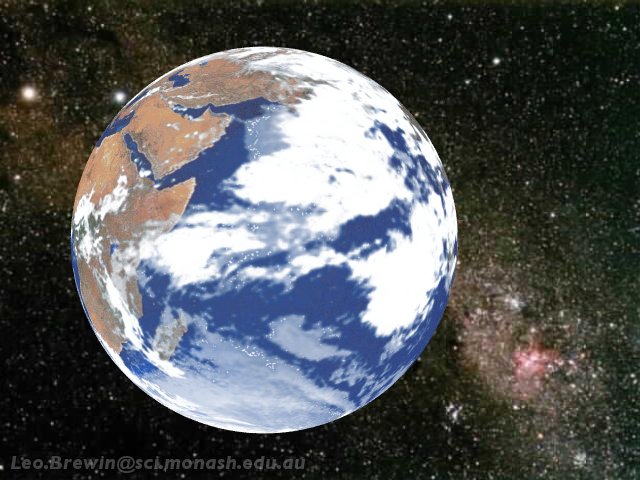
Parliament House, Canberra
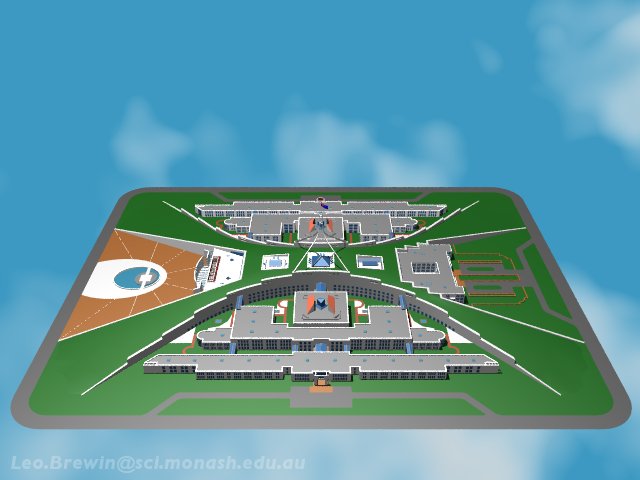
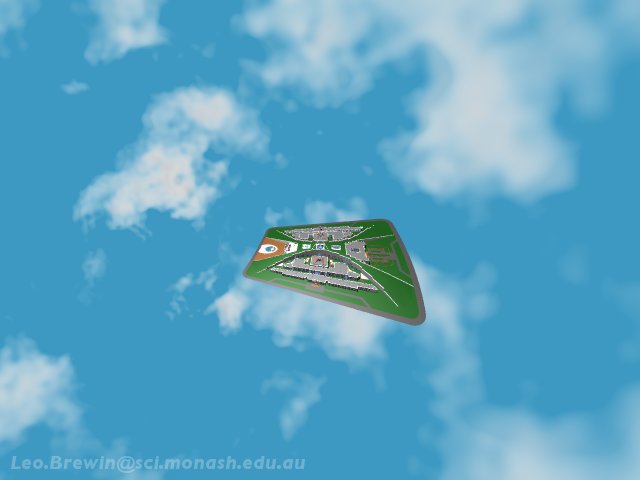
Images from Dr Who
This was my favorite scifi show for many years. It had it all : Time travel, regeneration of the lead character, daleks to rule the universe, cardboard sets and a great them tune.

|

The Eight Doctors Top : William Hartnell, Patrick Troughton,John Pertwee, Tom Baker Bottom : Colin Baker, Peter Davidson, Sylvester McCoy, Paul McGann |
|
|

|
|
Davros and his Daleks enjoy the fruits of an exploding pavlova |
|
|
|
A rare scene noteable for not being filmed in a tip. |
|
|
|
Dalek Contiki Tour London 1987 |
|
|
| And would you like fries with that? |
The Tardis Door Sign

Credits
All images of Dr Who are copyright of The BBC.The Povray model of the Tardis was adapted from a model posted by Michael M Imrie.
http://www.users.globalnet.co.uk/~mimrie/NewFiles/Tardis.htm
The Startrek model was created by Chris Setterington and Erik Timmermans.
The surface maps for the Earth and Moon were prepared by James Hastings-Trew and Constantine Thomas.
http://evildrganymede.net/art/art_f.htm
http://planetpixelemporium.com/planets.html
See also the work of Bjorn Jonsson.
The galaxy background images were created using the Galaxy package written by Chris Colefax.
http://www.geocities.com/ccolefax/galaxy.html
The Jetsons image is the copyright of Hanna-Barbera Productions.
All of the movies were generated by me using my modified version of Povray 3.6. Contact me for details.
Related pages elsewhere on the web
There are quite a few good sites that cover the physics of Special Relativistic Photography far better than that covered here. Here are some of those linksAntony Searle (while an undergraduate at the ANU) wrote his own special relativistic ray-tracer from scratch. The product is known as Backlight which he has used to produce various movies (which I happen to think are some of the best on the web). Well worth a visit.
Daniel Weiskopf has some produced first class movies (a trip to Saturn, a trip through a salt lattice and a flight through the Brandenburg Gate and more). He also provides examples of the Doppler and headlight effects. His movies, along with the Antony Searle's, are some of the best movies I have seen on the web.
John Walker has put together a very nice set of tutorials covering everythting you need to know to understand special relativity and ray tracing.
Andrew Hamilton has a good summary of other people's efforts. He also has some excellent material on what you would see if you ventured near and even into a black hole.
Norbert Dragon and Nicolai Mokros will take you on a trip through Stonehenge. This site does contain a far deal of technical material and it is well worth a visit.



